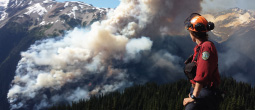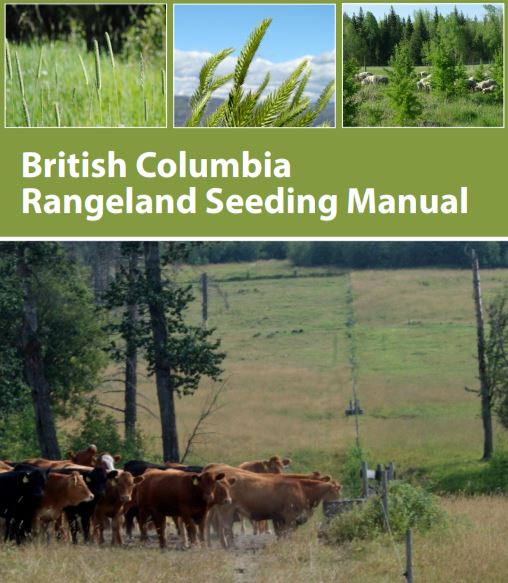Rangelands and wildfires
Fire is a central factor in shaping B.C. rangelands. The inclusion or suppression of fire as a disturbance factor on the landscape has and continues to influence both individual plant species and plant community dynamics.
While fire is a topic that elicits fear in many people, it is useful to recognize that many rangeland types are adapted to survive, and even thrive, with periodic fire. The fire return interval that is normal varies from plant community to plant community—and must be considered when assessing pre- and post-fire conditions on B.C.'s rangelands.
Potential benefits of fire on rangelands
Fire represents a potential mechanism for plant and ecosystem renewal. Some of the benefits of properly prescribed fire include:
- Reduction of the litter layer, which in turn reduces a rangeland's risk of succumbing to catastrophic wildfire
- Proactive use of fire can reduce the risk to life, limb and infrastructure
- Fire can increase habitat heterogeneity (patch dynamics)
- Fire can increase light infiltration and capture by reducing both over-story and litter layers
- Fire can promote plant health and understory development, which has value for wildlife and livestock
- Fire can improve access to forage for both wildlife and livestock
Potential consequences of fire on rangelands
Fire can be risky if it is ill-timed, occurs too frequently or not often enough. Fire coupled with poor grazing management practices can worsen negative consequences. For example, grazing too soon after a fire can be disastrous for many species, since they are especially vulnerable at this point in time.
Undesirable consequences of fire include:
- Increased stress on forage plants
- Reduced vigour (health) and increased plant mortality
- Increase in weedy species
- Increase in soil exposure and soil movement (for example, sloughing, terracing)
While fire is a potentially a useful management tool for B.C. rangelands, it is critical to recognize that individual species vary in their response to fire. Species response to fire can be mitigated by the application of active management.
Fire guidance
- Fire and fuel management
- Tools for fuel management
- Fire Management Stocking Standards (PDF, 1MB)
- Fuel Management Prescription Guidance (PDF, 287KB)
- Post-Natural Disturbance Forest Retention Guidance (PDF, 1.2MB)
- Effects of Prescribed Fire on Site Productivity: A Literature Review (PDF, 72KB)
Ecosystem restoration
Ecosystem restoration helps with the recovery of an ecosystem that has been degraded, damaged or destroyed by re-establishing its structural characteristics, species composition and ecological processes.
BC Wildfire Service
Report a wildfire: 1-800-663-5555
or *5555 on a cell
Fire information: 1-888-336-7378
Burn registration: 1-888-797-1717
Contact information
Forests.RangeBranch@gov.bc.ca


